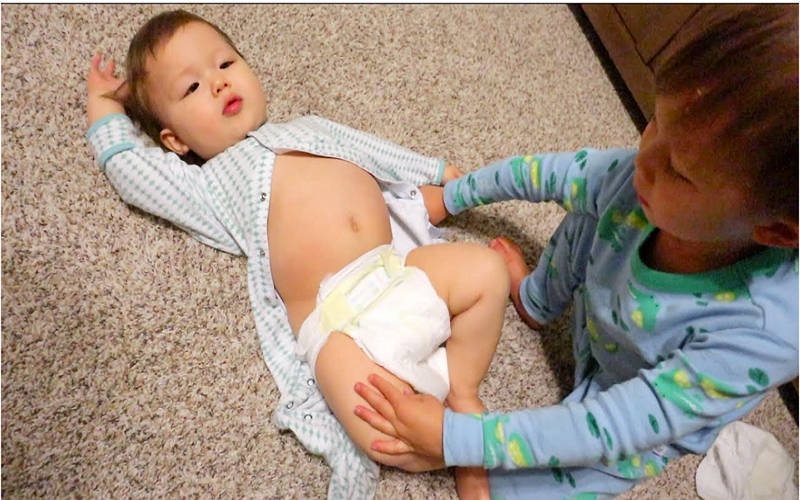Which diapers are the best for newborns? Newborns will go through about 20 diapers a day, so you’ll want to find one that is absorbent and comfortable. Disposable diapers should be breathable for your baby’s skin while still containing messes— cloth diaper or not.
It can take some trial and error before finding the perfect fit, so don’t get discouraged if it doesn’t work out at first! Your little one might need specially fitted pants with rubberized grips to stay on their bottom.

There are also certain types of disposables made specifically for newborns — lookout for these when shopping around. You may even find success with reusable technologies such as disposable inserts (all-natural) or biodegradable liners.
Some parents find that a mix of disposable and cloth diapers works best for them, and this option can be cheaper in the long run. If you choose to use cloth diapers, you’ll need to do some extra laundry but it’s worth it for the many benefits they offer.
Cloth diapers are made from natural materials like cotton or bamboo which make them softer against your baby’s skin. They also come in a variety of colors and patterns so you can find one that will match your nursery décor! Plus, when your child is ready to potty train, using cloth diapers makes the process much easier.
Why does my 1-year-old scream when I change her diaper?
This is completely normal behavior for a baby who’s about to be changed. If your little one has been playing and happily exploring their surroundings, they may not like the idea of being interrupted by such an unpleasant task as changing diapers!
You can avoid this problem in future diaper changes by making sure that you give her plenty of time before you begin changing her clothes; she will probably calm down once she realizes it won’t last very long and then everything will go back to normal again.
Don’t feel discouraged if this happens several times until your child gets used to the new routine – all children are different, so what works with some doesn’t necessarily work with others.
How do you change a diaper on a wiggly baby?
You don’t. They do it themselves! But seriously, here are a few tips to make the process easier:
-Start with a clean diaper.
-Use the front of your hand to hold their ankles, not fingers (fingers go too close to nails).
-Drape them over one knee if they are wiggly or standing up in the air can cause scratches on little legs.
-Unsnap the dirty diaper and move it out of the way without letting the baby go near any open pins. If you touch anything but plastic with an exposed pin, you will get pricked!
-If there is poop make sure you scrape away from their skin first – otherwise germs could enter through broken skin and give them a rash while still inside their diapers! No good at all… Then use wipes or warm water and soap depending on what kind of mess it is.
-Make sure the new diaper is properly positioned before you release them by tucking in the front and back panels and securing the tapes (or if it’s cloth, tying it up nice and snug).
-Check their behind to make sure everything is clean – there should be no redness or signs of a rash.
-Give them a pat on the backside and tell them how proud you are! They just changed their diaper like a big boy or girl!
How do I get my toddler to stop kicking during diaper changes?
One way to get your toddler to stop kicking during diaper changes is to have them help you. Explain what you’re doing and ask them to help you by holding the new diaper or getting a wipe. Another way is a distraction.
Try singing a song, telling a story, or showing them something interesting outside of the window. Finally, praise and rewards can also work well. If they stay calm and let you change their diaper without any trouble, give them a small toy or treat afterwards.
Praise them for being good helpers and behaving well. These techniques should help your toddler feel more in control of the situation and less anxious, which will hopefully lead to fewer kicks during diaper changes!
Still, having trouble? Talk to your paediatrician about other strategies that may work better for your child. They may have some helpful tips or advice on how to make diaper changes less stressful for both you and your toddler.
How can I improve my nappy changing?
There are a few things that you can do to improve your nappy changing:
– Change your baby’s nappy as soon as possible after they wet or soil it. The longer the nappy is left on, the more difficult it will be to clean them and the greater the chance of skin irritation.
– Make sure that you have everything you need before you start Changing Nappies – this includes a fresh nappy, wipes, cream (if necessary) and a towel.
– Try to keep your baby in an upright position when changing their nappy. This will help to avoid any leaks and make it easier for you to clean them up.
– Be careful not to get any dirty water or wipes on their face.
– If you are changing your child’s nappy at home, put the dirty one in a bin bag and tie it securely before putting it outside or taking it to the waste disposal unit. You can then discard this bag as normal as other household rubbish.
– Wash your hands thoroughly after Changing Nappies – especially if there is any poo involved! This will help prevent infection but also avoid passing germs onto others e.g children/grandparents etc who may not be able to fight off an illness that easily (if at all!) Soap & water is best for getting rid of bacteria.
